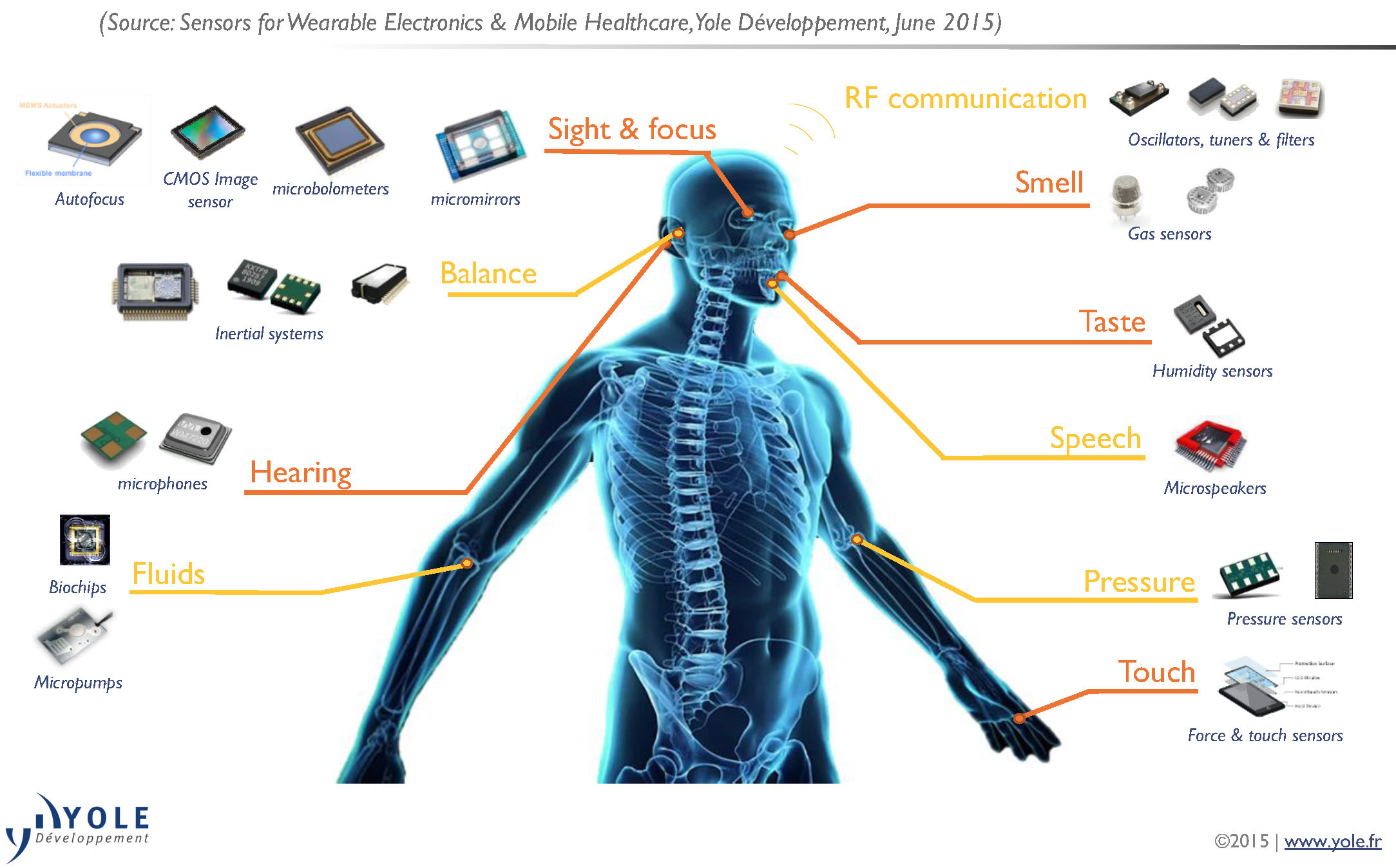MEMS technology for your senses
Hearing, touching, smelling and seeing… what will be the next improvement that MEMS will bring to our senses? Sensors are now small, reliable and accurate enough to be included in a pocket-sized device of only 9cm3 and interface with the environment, details Yole Développement in its latest report dedicated to the wearable industry: Sensors for Wearable Electronics & Mobile Healthcare. In this technology and market analysis, Yole forecasts a $88bn market by 2020, comprising 1.2bn sensor units.
Dr Eric Mounier, Senior Technology & Market Analyst, Yole Développement, will be part of the European MEMS Summit 2015 taking place from 17th to 18th September in Milan, Italy. He will present an overview of the wearable industry, its technological status and key market figures, as well as review the development opportunities linked to MEMS for wearable applications and share his vision with MEMS executives.The European MEMS Summit has been created by SEMI. This year, the Summit is titled: Sensing the Planet, MEMS for Life. This Summit is a networking platform to present ideas and exchange viewpoints on MEMS technologies, manufacturing and business challenges. Register right now and ensure your place in the tomorrow’s MEMS world.
In its annual MEMS technology and market analysis, Status of the MEMS Industry, Yole’s analysts confirm the MEMS market’s growth, with a major increase due to consumer applications. Yole forecasts a 12% CAGR between 2014 and 2020. MEMS for consumer markets will represent more than 50% of total MEMS market value in 2020. The accelerometer is probably the most interesting example. This MEMS device has grown in volume to more than 2bn units between 2008 and 2015. This growth is mainly due to smartphone applications, which have clearly changed the game with a new high volume/low cost ratio.
The MEMS industry’s birth was supported by automotive market needs. Its development has been ensured by new applications coming from the consumer sector. What will be the next step?
Dr Mounier comments: "Most of the MEMS companies benefited from this growth, across all sectors, with good revenues in 2014. But the most important fact is probably the new status of the MEMS industry. It is reaching a maturity level where it is proposing MEMS products with good market positioning in terms of technology and cost. It is also characterised by a new status for the leaders of this industry. At Yole, we call them, the 'MEMS titans'. Including Canon, Knowles, InvenSense, Robert Bosch and STMicroelectronics, they currently share most of the MEMS market pie.”
But the MEMS world will not stop here. With the first developments in the 1960s, a move in wearable applications towards the consumer and wellness sectors could become the next step. Yole’s team follows this industry closely, sharing information with the key players every day. 90% of the market will be focused on fitness band and smart watch applications, details Yole in its MEMS & Sensors for wearables report.

Mimicking the 5 senses... and more
What can we expect from wearable applications? Today they are very different to the original vision. MEMS companies would like to mimic the five basic human senses and add new ones, such as night vision within smartphones, as suggested by FLIR Systems’ 2015 announcements. Thanks to the evolution of MEMS technology, MEMS players can develop a real interface between humans and our environment.
“The status of MEMS technology turns wearable applications into a reality,” asserts Dr Mounier. “With WiFi, cellular and Bluetooth, MEMS devices can be connected everywhere. Today’s components are also based on a low power consumption principle and allow us to collect all the data needed to monitor our environment. All attributes are therefore in place to ensure the development of wearable solutions.”
But is a 'good' technology enough to be successful and ensure the development of a new market? Apple and its new Apple watch is an interesting case study. Dr Mounier will review these technology and market trends and detail the related challenges during his presentation at the European MEMS Summit.










